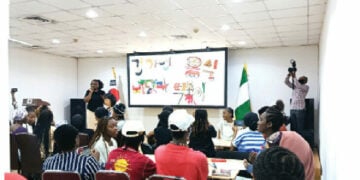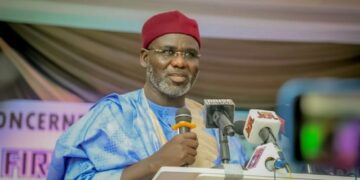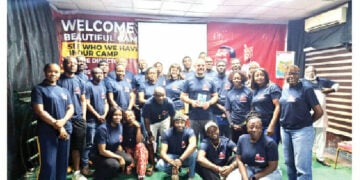The Sightsavers Nigeria in conjunction with federal government and the Bill & Melinda Gates Foundation, has taken steps to eliminate Neglected Tropical Diseases (NTDs) in Nigeria.
This meeting brought together key partners, government officials, and stakeholders to discuss progress, challenges, and collaborative efforts in the fight against NTDs in the country in Abuja, yesterday.
Speaking at the event, Program Director of Sightsavers Nigeria, Anita Gwom, stated that Nigeria bears the highest burden of neglected tropical diseases in Africa.
“As the giant of Africa, we unfortunately also lead in the prevalence of river blindness and other NTDs,” she said.
She emphasized that over 2 million people are affected—either directly or indirectly. “In many ethnic communities, simply residing there puts individuals at risk of contracting these diseases,” she noted.
“We began this journey a long time ago. Most endemic communities have received essential medicines to control these diseases. Through mass drug administration at the community level, treatment has been ongoing for over 20 years.”
She explained that Sightsavers employs community-based approaches to ensure that every eligible individual receives the necessary medication. “We have committed volunteers who distribute these medicines door to door. They are trained to ensure efficient and equitable distribution.”
Gwom added that the current focus is on conducting comprehensive assessments to evaluate progress and determine next steps.
“This meeting is to identify gaps and assess what remains to be done. Without proper evaluation, we cannot move forward or achieve our goal of eliminating NTDs in Nigeria. We cannot continue treating communities indefinitely.”
She also cited growing insecurity in parts of Nigeria as a major challenge.
“Insecurity prevents us from accessing areas eligible for assessment, as we cannot risk the lives of our field staff. In states like Kaduna, Katsina, Borno, and Niger, the high level of insecurity makes it impossible to assess the progress made by the program.”
Gwom noted that Sightsavers typically partners with state governments, working with policymakers to implement interventions. However, access to these governments can sometimes be difficult.
“In some states, we’ve seen strong commitment even from governors who have provided direct funding for NTD implementation. But more needs to be done.”
She urged greater awareness and support from state leaders to achieved the goal aim by November 2025.”
“At this final stage of elimination, we need their involvement more than ever. Starting a project is easy, but completing it is the real challenge.”
She stressed the importance of resource mobilization at all levels.
“We understand the funding environment is shrinking. Foreign aid is no longer as reliable, so we’re calling on the government and Nigerian philanthropists to support efforts to eliminate NTDs.”
Also speaking, Fatai Oyediran, Director and National Coordinator of Neglected Tropical Diseases at the Federal Ministry of Health and Social Welfare, highlighted the purpose of the meeting.
“The objective is to convene the project management team for the Lymphatic Filariasis and Onchocerciasis assessment project, supported by the Bill & Melinda Gates Foundation.”
“This body functions like a steering committee—reviewing what has been achieved in the past six months and strategizing based on successes and challenges.”
Oyediran explained that the project, initially set to end in February 2025, was extended to September 2025 to allow for proper assessment.
“The aim is to determine whether we can stop mass drug administration (MDA). For the past 10–15 years, we’ve continually distributed medication to affected populations. We cannot keep treating people without knowing the current status of disease transmission.”
He emphasized that the ministry and its partners are committed to using evidence-based guidelines to assess areas treated for many years.
“The goal is that by the end of September 2025, approximately 32 million people will no longer require treatment under this project.”
On his part, Prof. Oladele Okogun a public health parasitologist based in Europe, praised the team’s achievements.
“We’ve come to celebrate the fact that we’ve surpassed our target deliverables for this phase. We have only five years left to eliminate lymphatic filariasis, and we’re on track to meet this goal,” he said.
“Though much work remains, and challenges are increasing, we are encouraged by the dedication of communities and partners. The day will come when no one will need these medicines anymore.”
He expressed excitement over the progress made by the project management team in controlling both Onchocerciasis and Lymphatic Filariasis.
“For a disease where communities have been receiving medicine for over 20 years, we are now providing the evidence needed to stop treatment. These are ancient diseases, but elimination is within reach.”
“Nigeria currently carries the highest burden in sub-Saharan Africa. But what we’ve done proves that these diseases can be eliminated by 2030.”
He concluded by stressing the urgent need for funding and resources.
“To achieve elimination before the target date, we need financial support to complete these critical surveys.”





